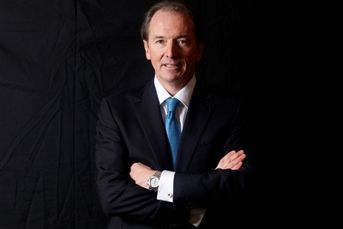Hold the applause for Bernanke (for now)
The plutocrats are heralding Ben S. Bernanke's eight years as Federal Reserve chairman. And with good reason, but maybe we should wait before we start the parade.
The plutocrats are heralding Ben S. Bernanke’s eight years as Federal Reserve chairman. And with good reason.
After all, Mr. Bernanke’s two signature achievements — bailing out the bankrupt financial system and serving as the architect of the cheap-money policy known as quantitative easing — have done the very things the wealthy hoped they would. They re- established the status quo on Wall Street after the 2008 financial crisis, and reignited the Dow Jones Industrial Average, which is more than 140% higher than its March 2009 nadir of 6,500.
Thanks in large part to Mr. Bernanke’s policies, the rich have never been richer, and the gulf between the haves and have-nots has never been wider. No wonder billionaires like Mr. Bernanke.
One example of the praise being heaped on the former Fed chairman: Austan Goolsbee, chairman of President Obama’s Council of Economic Advisers from 2010 to 2011 and now a University of Chicago economics professor, wrote that it is “time for the critics to admit they were wrong” about Bernanke’s tenure. In a Wall Street Journal op-ed article, Mr. Goolsbee said Mr. Bernanke “got the warm reception he deserved” — a standing ovation — after his farewell address at the American Economic Association.
If only this were true.
There is no question Mr. Bernanke took decisive action to bail out Wall Street, as both an advocate for the $700 billion Troubled Asset Relief Program and for the trillions of dollars in cheap loans the Fed made available to banks. The idea, of course, was to get these morally and financially destitute institutions back on their feet so they would make much-needed capital available to a shell-shocked Main Street.
But what did the rescue actually accomplish? Wall Street is definitely back, and better than ever. It is even safe to say the financial industry is entering a new Golden Era. Why? First, there is precious little competition. Where once there had been hundreds of Wall Street firms competing for the business of corporations, hedge funds and private-equity firms, now there is a small cartel. With Lehman Brothers and Bear Stearns defunct, the former Merrill Lynch safely tucked inside Bank of America Corp., and Morgan Stanley shifting away from investment banking to asset management, does any client of Goldman Sachs Group Inc. really feel it has much choice?
In 2013, on almost $100 billion in revenue, JPMorgan Chase & Co. posted a “pre-provision” — that is, before one-time charges such as litigation expenses — net income of $26.1 billion. Actual net income was almost $18 billion. That reads like the income statement of an OPEC member.
Second, thanks to Mr. Bernanke’s easy-money policies, which have driven down interest rates to rarely seen levels, Wall Street banks don’t have to pay much for their raw material: the money they use to make more money. Money-center banks can borrow from the Fed on a short-term basis at virtually no cost. They can also borrow from the public markets at rates that reflect their “too-big-too-fail” status.
Rock-bottom interest rates mean that banks with big retail subsidiaries, such as JPMorgan and Citigroup Inc., pay close to nothing for trillions of dollars of customer deposits. (The interest rate on my Chase savings account is 0.15%).
Given the dearth of competition, the free raw material and the improving economy, which will continue to increase the demand for banking services, it’s no wonder that the good times are back on Wall Street and bankers are genuflecting in Mr. Bernanke’s direction.
Unfortunately, what’s good for Wall Street has been bad for Main Street. Mr. Bernanke’s low interest-rate policies have crushed savers and the tens of millions of retired Americans who must survive on a fixed income. What’s more, by buying some $85 billion of debt securities each month for the past few years, Mr. Bernanke’s quantitative easing has artificially stimulated the demand for bonds, raising their prices and lowering their yields.
Thanks to Mr. Bernanke, the markets have once again mispriced risk — exactly the mistake markets made in the run-up to the 2008 crisis. At the end of December, the average junk-bond yield was just 397 basis points (3.97 percentage points) over the yield on comparable Treasuries, marking the first time since July 2007 that the spread had fallen below 400 basis points, according to a Bank of America Merrill Lynch index. That’s close enough to the all-time low of 240 basis points reached in June 2007 to be really scary.
Then there is the downright frightening prospect of what might happen to the bond market if the Fed ever decides to sell some of the $4 trillion of assets — all those bonds it has been buying — on its balance sheet, which is five times larger than before Mr. Bernanke’s buying spree.
The truth is, it’s way too early for history to pass judgment on Bernanke’s chairmanship. While he has restored the status quo and then some to Wall Street, he has left Main Street in a chronic state of fear and recession, with unacceptable levels of unemployment and virtually no growth in middle-class wages.
That first draft of history might be something for Mr. Bernanke to contemplate as he writes his memoirs at his new, and quite comfortable, perch at the Brookings Institution, not far from his former office at the Fed.
William D. Cohan is a Bloomberg View columnist. He was formerly an investment banker at Lazard Freres, Merrill Lynch and JPMorgan Chase.
Learn more about reprints and licensing for this article.




